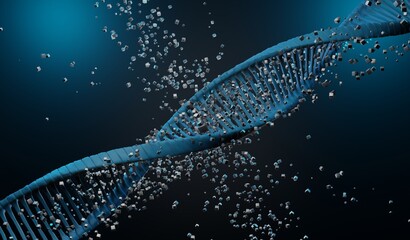Analyze the components of complete proteins.
Introduction:
Proteins are intricate molecules that play a critical role in maintaining and building the body's tissues. They comprise amino acids, the building blocks for numerous physiological processes. A "complete protein" contains all nine essential amino acids in adequate amounts. Here, we delve deep into the intricacies of complete proteins, their best sources, their numerous health benefits, and their exceptional nutritional value.
Components of Complete Proteins:
1. Essential Amino Acids:
Complete proteins contain all nine of the essential amino acids, which are:
- Histidine
- Isoleucine
- Leucine
- Lysine
- Methionine
- Phenylalanine
- Threonine
- Tryptophan
- Valine
The body can't produce these amino acids, so they must be sourced from our diet.
2. Non-Essential and Conditionally Essential Amino Acids:
Aside from the essential amino acids, proteins may also contain non-essential and conditionally essential amino acids. While they're not always required in our diet (our body can produce them), certain conditions might increase our need for them.
Best Protein Sources:
1. Animal Sources:
Meat: Beef, chicken, pork, and lamb are all high-quality protein sources.
Fish: Especially fatty fish like salmon, mackerel, and sardines.
Eggs: They are one of the best sources, with egg whites being almost pure protein.
Dairy: Milk, cheese, and yogurt.
2. Plant Sources:
Quinoa: A grain that is both a good protein and fiber source.
Soy products: Like tofu and tempeh.
Legumes: Lentils, chickpeas, and most beans.
Seeds: Such as chia seeds and flaxseeds.
Health Benefits of Complete Proteins:
Muscle Building and Repair: Protein is essential for muscle synthesis, repair, and maintenance.
Hormone Production: Proteins help in creating vital hormones like insulin.
Immune Function: Antibodies, crucial for immune function, are made of protein.
Enzyme Production: Many enzymes responsible for countless metabolic processes are proteins.
Energy Source: When carbohydrates are sparse, the body can use protein as an energy source.
Supports Hair, Skin, and Nails: These parts of our body are protein structures, and their health is maintained by adequate protein intake.
Nutritional Value:
Macronutrient Profile: Protein is one of the three macronutrients (along with fats and carbohydrates). Each gram of protein provides four calories of energy.
Vitamins and Minerals: Protein-rich foods, especially from animal sources, often come packed with essential vitamins like B12 and minerals like iron, zinc, and selenium.
Omega-3 and Omega-6: Protein sources like fatty fish provide essential fatty acids, which have numerous health benefits, including heart health.
Antioxidants: Certain proteins, especially those from plant sources, offer antioxidants that combat oxidative stress in the body.
Conclusion:
Complete proteins, rich in all essential amino acids, are vital for our health and well-being. Whether sourced from animals or plants, incorporating these proteins ensures a balanced diet. Recognizing the health benefits and nutritional value they offer aids in making informed dietary choices for a healthier future.
What are the essential amino acids, and why are they crucial for complete proteins?
How do complete proteins differ from incomplete proteins in terms of amino acid composition?
Why is it important for humans to consume complete proteins or a combination of proteins that together provide all essential amino acids?
How do animal-based proteins compare to plant-based proteins in terms of their completeness?
What role do protein structures, like primary, secondary, tertiary, and quaternary, play in the functionality of complete proteins?
Micronutrient
Deficiency and toxicity of vitamin E
Vitamin K deficiency and toxicity:





.png)




0 Comments
please do not enter spam link in the comment box.